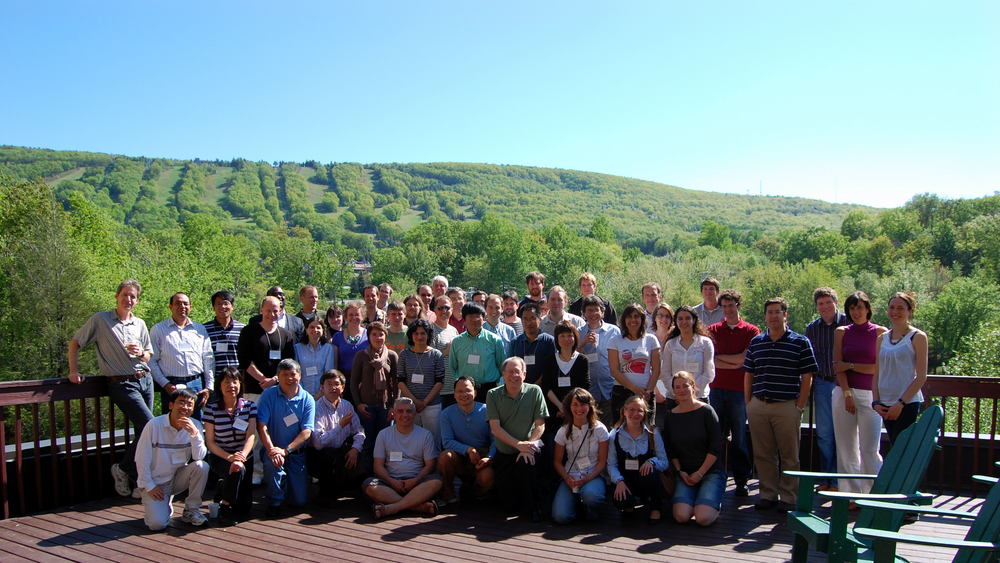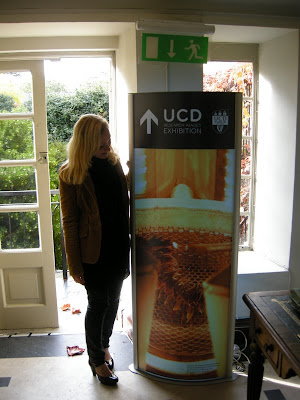
Photo taken on November 25, 2009 in the area adjacent to the National Park, near Molimocho.
The peat in the Park is very dry at the moment (water content bellow 10 to 20% dry weight) after a prolonged drought and excessive irrigation of near fields that has lasted several years now. Under these dry conditions, peat smoulders readily (smouldering fires are known to spread at water content bellow 55% dry weight). Visually, only weak plumes of smoke can be appreciated in holes distributed over a surface area of 5 ha inside the Park and of 40 ha outside the Park. The real magnitude of the fire lies bellow the surface and no one knows the size of it.
This fire was detected first inside in Park in September 2009. But smoking signs of smouldering activity were detected earlier than that just outside the Park limits. The fire outside was caused by a flaming wildland fire extinguished in August but that left the peat smouldering. The cause of he fire inside the Park is currently unknown and a handful of hypothesis have been put forward (subsurface propagation from the outside fire, self-ignition phenomena, ignition from previous flaming fires, and endemic fire in the ecosystem).

Snapshot showing the two possible regimes of biomass burning: flaming of the grass and smouldering of the peat under it. For scale reference, the flame is about 10 mm tall. Figure from CATENA 2008
On the 25th of November 2009 I visited Las Tablas de Daimiel National Park with the Director of the Park Mr Carlos Ruiz, Dr Luis Moreno from IGME and the Fire Service Chief Officer in Castilla la Mancha.
The ongoing suppression, prevention and compartmentation tasks are innovative and effective. Note that peat fires are extremely difficult to tackle and the nightmare of fire-fighters. Indeed, little more can be done until the final solution of the global flooding (not partial) of the Park arrives in January 2010 (as agreed by national authorities).

Photo taken inside the National Park (Nov 25, 2009), showing heavy machinery stirring and compacting the soil down to a depth of 3 or 4 m.
I was specially impressed by the extent of the peat fire in the area adjacent to the Park and the novel large-scale prevention work compacting of the soil and local flooding from the surface. About 30 ha has been treated like this, stirring and compacting the soil down to a depth of 3 or 4 m with heavy equipment to prevent the spread of the fire. This prevention technique aims at cooling down possible hot spots and disrupting the dense network of natural pipes feeding oxygen to the deeper fire seats and carrying the smoke from the subsurface to the atmosphere. Nothing similar has been done before in other regions hit by smouldering fires (Borneo, British Isles, Alaska, Canada, Siberia, Iran ....)

Photo taken inside the National Park (November 25, 2009), showing the several hectares of peatlands that had been treated by compaction and stirring of the soil layers.
The day after, the 26th, I gave a seminar on Smouldering Fires at the ICAI School of Engineering, Madrid (the slides are accessible here).
Photo taken on November 25, 2009 in the area adjacent to the National Park, near Molimocho.
My comments on peat fires and visit to the Park was covered by Spanish media (for English, try funny translations here):
- 10/1/2010: "Spain Begins to Flood Park With Peat Fire", New York Times/AP.
- 27/12/2009: Un experto en fuego dice que la lluvia y el frío no solucionan el incendio de las Tablas de Daimiel. EFE/Publico.
- 26/11/2009: Un experto en fuego alaba el trabajo para apagar las turberas, EFE/ABC
- 26/11/2009: El incendio de Las Tablas ha podido emitir entre 10 y 40 toneladas de CO2 al día, EFE/CR Diario
- 26/11/2009: Only total flooding will solve the problem, Universidad Pontificia Comillas
- 14/10/2009: El fuego tiene combustible para arder durante años, El Pais












































